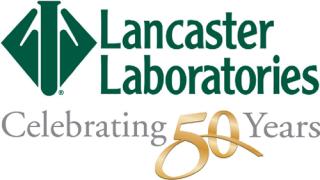Lancaster Labs Develops Extractables Database for LC/MS AnalysisLancaster Labs Develops Extractables Database for LC/MS Analysis
July 1, 2010

The FDA has been focusing effort into evaluation of potential adulteration of drug products due to contact with packaging and closure systems, sample delivery devices, and components used in product manufacturing. Packaging includes components such as vials, caps, and stoppers. Drug delivery devices include nebulizers and inhalers. Components used during product manufacturing include filters, tubing, fittings, connectors, bioprocess bags, and bioreactors. Lancaster laboratories provides support by performing extractables and leachables testing. Extractables are compounds that can be extracted from a component under extreme conditions such as the presence of harsh solvents or elevated temperatures. Leachables are compounds that leach into drug products from a component through direct contact under normal storage or manufacturing conditions. Both extractables and leachables represent possible drug product contaminants and therefore need to be evaluated.
Sources of extractable and leachable compounds include antioxidants, antiozonates, ultraviolet stabilizers, plasticizers, processing aids, accelerants, coatings, elastomers, inks, and vulcanizing agents. Antioxidants, antiozonates, and UV stabilizers are added to polymers to deter possible degradative processes. Plasticizers are added during plastics manufacturing to make plastic softer and more flexible. Processing aids increase the flowability of plastics. accelerants and vulcanizing agents are used in rubber curing processes. And elastomers are used to make rubbers relatively soft and deformable.
Extractable studies are performed to determine which of those compounds can be extracted from a defined component under harsh conditions. These studies often involve incubation of components in solvents of varying polarity under high temperatures. Resulting extraction solutions are subjected to a range of analytical techniques to characterize their extractable profile: gas chromatography/mass spectrometry (GC/MS), liquid chromatography/mass spectrometry (LC/MS), and inductively coupled plasma analysis (ICP).
GC/MS analysis consists of two different types of sample introduction: headspace (used to profile volatile compounds) and direct injection (used to profile semi-volatile compounds). GC/MS uses electron impact ionization producing a mass spectrum displaying a unique fragmentation pattern for each compound of interest. The mass spectra can be compared with commercially available databases to assist in identification of the compound.
LC/MS is used to evaluate extracted solutions for nonvolatile compounds. It uses various soft ionization techniques that provide a mass spectrum primarily displaying the molecular peak. Modes of ionization include electrospray and atmospheric pressure chemical ionization. Until now, no commercial databases were available to assist in identifying LC/MS generated mass spectra.
To assist our clients with identification of extractable compounds detected by LC/MS analysis, Lancaster Laboratories has developed a nonvolatile compound database. Lancaster has purchased a variety of standard materials based off compounds commonly used in the manufacturing of different components used in the pharmaceutical industry. Lancaster has generated mass spectra of standards for various antioxidants, antiozonates, UV stabilizers, processing aids, plasticizers, and brighteners. The database currently consists of ~150 compounds. All have been analyzed using electrospray ionization in both positive and negative modes, along with atmospheric pressure chemical ionization in the positive mode. Unknown mass spectra generated by LC/MS analysis will be compared with the Lancaster generated database to assist our scientists with identification of the extractable. Although the database will assist our scientists in determining identification of unknown compounds Lancaster cannot guarantee identification during the course of an extractable/leachable study. If further work is required to attempt identification of unknowns, then Lancaster would recommend using either LC/MS time-of-flight (TOF) or LC/MS orbitrap technology to determine their accurate mass.
Celebrating 50 years, Lancaster Laboratories is the global leader in pharmaceutical and biopharmaceutical laboratory services, providing innovative and timely scientific solutions that enable customers to better manage drug development.
About the Author
Author Details
Dr. Thomas Lehman is manager of method development and validation at Lancaster Laboratories, Inc., 2425 New Holland Pike, PO Box 12425, Lancaster, PA 17605-2425; 1-717-656-2300; [email protected], www.lancasterlabs.com.
You May Also Like






